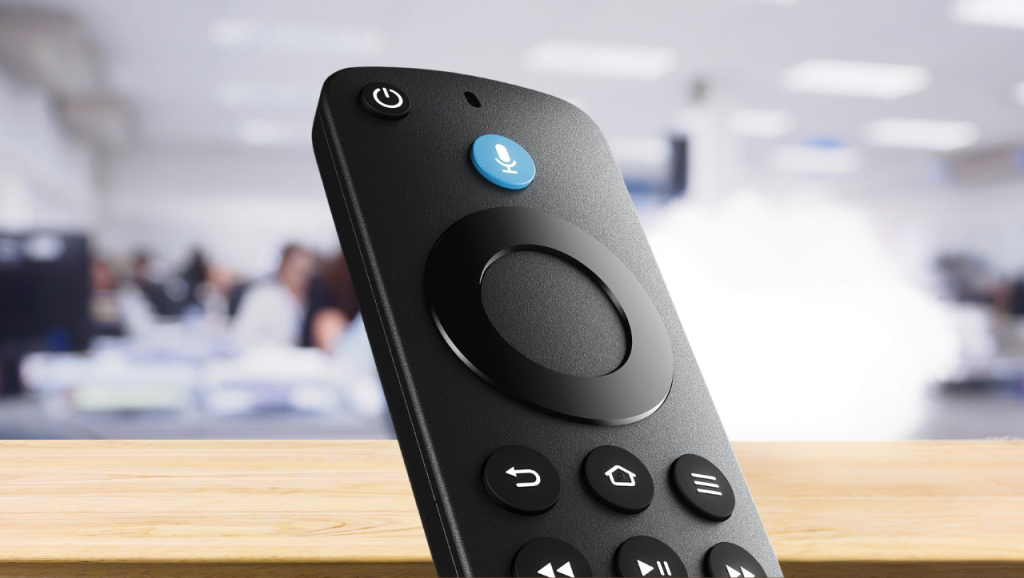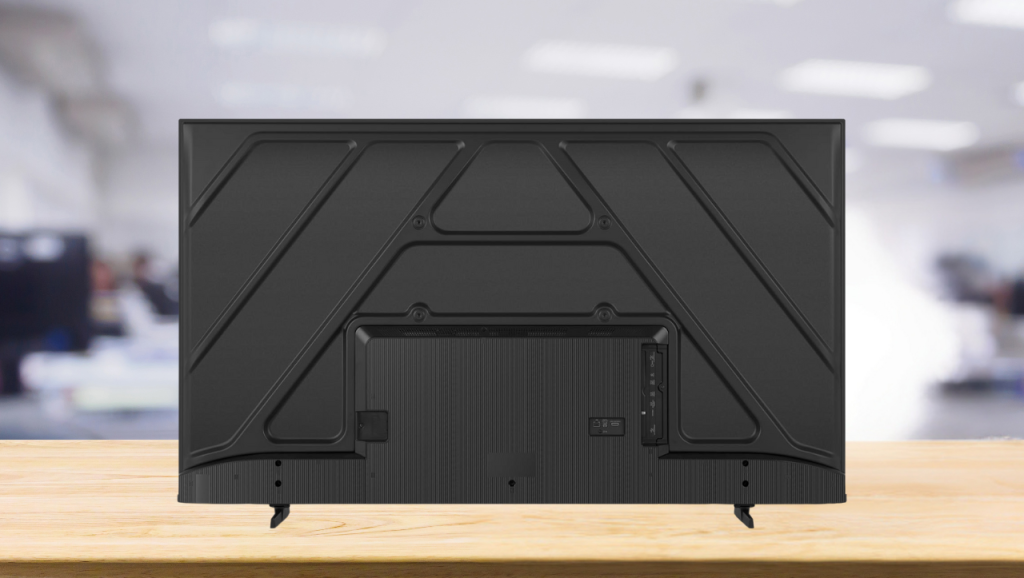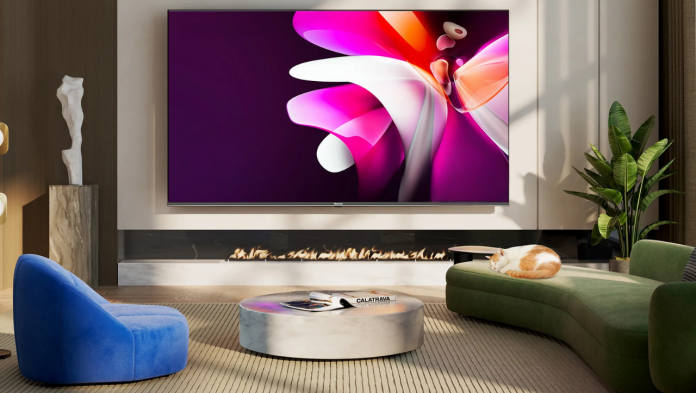Best Deal Today
It’s been a banner year for Hisense, a renowned international brand that continues to disrupt the reign of major home electronics brands like LG, Samsung, and Sony. The company’s flagship, the Hisense U8H, was one of the best LED TVs I reviewed last year, in part because of its affordable price compared to top models from Samsung and Sony. The Hisense 65QD6QF is part of the company’s QD6 Series that builds on the popularity of its high-end sibling to deliver lots of value in an entry-level package.
It sits below the Hisense QD7N QLED in both performance and pricing, but it remains a stellar entry-level TV. And like the QD7 Series, the Hisense QD6 lacks local dimming, it’s limited to HDMI 2.0 bandwidth and 4k @ 60Hz. We’ve seen competitors at this price point offer HDMI 2.1 and 4K @ 120Hz, making them gaming-ready with the latest gaming consoles.
On the upside, the Hisense QD6 supports Dolby Vision and Dolby Atmos, is available in a wide range of sizes, and runs Amazon’s Fire TV OS. If you’re on a tight budget but need a big-screen 4K TV for movies and sports, the Hisense 65QD6QF is ultimately one I’d recommend, partly for its specs and majorly for its price and solid performance.

About the Hisense 65QD6QF
For this review, we have the 65-inch Hisense QD6/65QD6QF QLED, but it also comes in 43-, 50-, 55-, 75-, 85-, and 100-inch sizes. The QD6 has seen a significant price drop in the months since its initial release. You can check the exact price in the links above, but you may find that they’re slightly different depending on where and when you shop. Broadly speaking, I don’t expect the Hisense QD6 to get much more expensive than it is right now, particularly as we move into peak shopping season.
Here’s how each model compares:
- 43- inch: 43QD6QF
- 50- inch: 50QD6QF
- 55-inch: 55QD6QF
- 65- inch: 65QD6QF
- 75- inch: 75QD6QF
- 85- inch: 85QD6QF
- 100-inch: 100QD6QF
While we don’t expect there to be a major difference in performance from one size to the next, each model is equipped with a different number of quantum dots. Even though the number of zones tends to increase proportionally to a TV’s size, a difference in count would spell slight differences in how they perform, particularly when it comes to contrast.
Here’s a rundown of the QD6’s key hardware and software specifications:
- Resolution: 4K (3,840 x 2,160)
- Display type: Full-array LED with Direct LED and quantum dots (VA-style panel)
- HDR support: Dolby Vision, HDR10+, HDR10, HLG
- Dolby Atmos: Yes
- Connectivity: 2 x USB 2.0, 4 x HDMI 2.0, 1 x Ethernet, Wi-Fi
- eARC support: Yes (HDMI 3)
- Motion rate: 120
- Smart platform: Google TV
- Color: DCI-P3 color space/90%
- Variable Refresh Rate (VRR): Yes
- Auto Low Latency Mode (ALLM): Yes
- Processor: ARM Cortex-A53
- Other features: Fire TV, AI 4K upscaling, Apple AirPlay, Apple HomeKit, Amazon Alexa, Google Assistant, Google Chromecast, ATSC 3.0, Game Mode Pro, Gaming Bar, Voice command

Design and Remote
On design, the Hisense 65QD6QF looks like your typical LED-LCD screen. Only when compared against older CRT TVs and flat screen TVs would the QD6 look svelte, but if you’ll place it on a stand where you’ll see its back every time you walk in the door, you can’t help notice how thick it looks compared to, let’s say, the paper-thin TCL QM6K I recently reviewed.
Looking at this TV face-on, however, it looks impeccably pleasant to stare at for long. The bottom lip is a little thicker than some other modern TVs, but sure, it looks beautiful and lively beyond any stretch of imagination. The panel is supported by a pair of slim, wide-set feet that easily snug into place and are held by a few screws. Set up is easy; you don’t need a pair of extra hands to get it running.
If you opt for a wall-mount setup, it’s a breeze too. You only have to remove two screws from the middle of the back of the display panel housing, then access the 400 x 300 VESA hole pattern for wall mounting.
Yet another thing I love about this TV’s design – the remote finally has the Home button in the right place.
The remote itself is a mixed bag; it feels like a cheap plastic wand, but it has some weight to it. It’s nothing compared to the latest remotes we’ve seen on some high-end TV models, but the design is a win. For example, the Alexa button is above the directional pad, and the rest of the buttons are below it. Other Fire or Google TVs place the voice assistant buttons at the center of the remote and the home button on the side. The remote is well-thought-out.
Picture Quality
The Hisense 65QD6QF is among the brightest TVs in this price range that I’ve seen this year. Its peak brightness of around 385 cd/m2 is higher than similarly priced 65-inch TVs, which only scrape 320 cd/m2 in most scenarios.
If your living room is fairly bright, the 65QD6QF will hold up quite well, so long as it’s not sitting directly in the line of a sunbeam. Dark-room viewing is impressive, too, thanks in part to the QD6’s ability to get bright. While its black levels aren’t as deep as some of its competitors, and the QD6 has a tendency to lift them when dark areas of the picture are competing with bright elements, they are not badly off to come in the way of immersive viewing. You’ll find the TV’s performance to be suitable for both bright and dark viewing environments.
The Hisense 65QD6QF delivers decent color and contrast, a strong feature set, and a surprisingly low price.
Another shoutout is for the Hisense QD6’s quantum-dot enhanced colors, too. It covers about 90% of the HDR color gamut (DCI-P3), which is slightly better than what you’d find on competing TVs, although not quite as impressive as the Hisense U8H. Still, there’s enough volume for the TV’s colors to pop in HDR – commonly not an easy feat for a TV in this price range.
The Hisense QD6 has an okay response time, meaning you can use it for basic gaming, but it’s not as swift as the TCL Q5/Q650F. You’ll notice it is a little sluggish with dark transitions, and unlike more expensive gaming TVs, it lacks HDMI 2.1, which would make it the ultimate gaming TV at this price point. And while it is not easy to find a TV that supports Variable Refresh Rate and Auto Low Latency Mode for under $600, Hisense offers that on this panel.
Even the TCL 5-Series, which also offers both VRR and ALLM, its panels limited to 60Hz, so 4K gaming at 120Hz is out of question. It’s all part of the compromise of buying an affordable TV. To secure slightly better gaming features, you’d have to spend more on something like the TCL 6-Series or the Hisense U8H.

Fire TV OS and Alexa
For you to get the most out of Fire TV features, you’ll need to sign in with your Amazon account, which is typical of Fire TV streamers, which are built around using your account for transactions like purchasing the app and renting media. However, on the Hisense QD6 TV, you don’t need an Amazon account to use the TV. There is an optional Basic mode that lets you use the TV as a TV, without access to most streaming features in the interface, but provides access to the TV’s varied inputs.
Still, most of us would want to use our Amazon account to access the full features of the Fire TV platform, bearing in mind how robust it is as a smart TV platform. For instance, it lets you access most streaming services, including Amazon Video and Music, Hulu, Netflix, Sling TV, Spotify, and Twitch.
Not surprising at all, while the Fire TV OS is ideally based on Android, rarely do you see Amazon and Google get along much on content. The Fire TV includes access to the Alexa voice assistant, which you can easily use on the TV by pressing the microphone button on the remote and speaking into it. Sure, it may not be as hands-free as the Echo or Echo Spot, but it’s still functional out of the box with the press of a button.
Hisense 65QD6QF Review: Outlook
The Hisense 65QD6QF is a great value among value TV propositions. It delivers stellar brightness and brings a slew of features at a more affordable price than competitors. And while nowhere near as powerful as its U8H counterpart, it might well have the best features among similarly priced QLED TVs in the market right now. At the end of the day, getting features like Dolby Vision and HDR 10+ means you’ll have a great viewing experience when it comes to movies and shows.
But when you start to compare it with some recently-released Mini-LED TVs, some costing a few dollars more, you start to notice some flaws. The display panel is bright, but we know it would be brighter at this price point. There are four HDMI ports, but all of them are limited to HDMI 2.0; none of them offers HDMI 2.1, and the display is limited to a 60Hz refresh rate when it comes to 4K content.
Right now, there are TVs with better performance, and they cost less than $200 more. Take, for instance, the 2025 TCL QM6K/ 65QM6K, which costs under $700 but offers a solid feature set, including HDMI 2.1, a 144Hz refresh rate, uses mini-LED for the display, Dolby Atmos, and runs the Google Smart TV platform.
Well, the TCL doesn’t cost under $400, however. Which means that if you’re shopping for a truly budget 65-inch TV with a decent feature set, the Hisense QD6 is probably the best TV you can buy right now, instead of buying an older model of a higher-end TV.
If your budget can allow you to spend a bit more, the TCL 65QM6K is money well spent and will get you more value. If not, the Hisense 65QD6QF is a solid choice.
Price Comparison



Affiliate Link Disclosure
In some of our articles and especially in our reviews, you will find affiliate links.For more information, you can read our full disclaimer.



